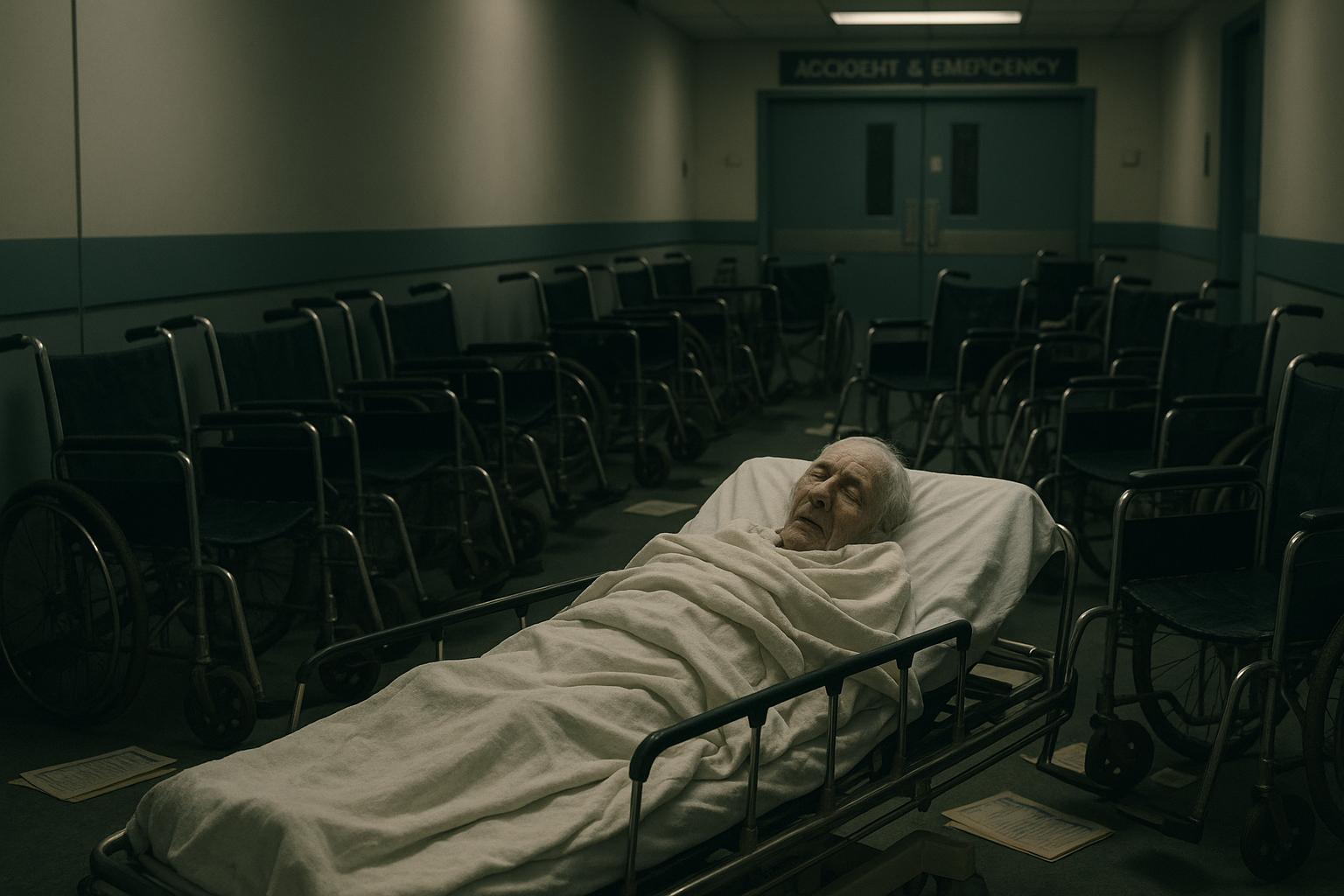The National Health Service (NHS) in England is grappling with a crisis of prolonged waits in Accident & Emergency (A&E) departments, with vulnerable older patients bearing the brunt of the problem. Age UK has issued a stark warning that long waits are "eating away at the heart of the NHS," publishing a report that details distressing stories of elderly patients enduring hours, sometimes over half a day, stuck in corridors and side-rooms. These makeshift treatment areas are frequently ill-equipped, with some patients left in their own excrement, receiving blood transfusions in cramped conditions, or, heartbreakingly, dying nearby without adequate privacy. The charity's report reveals that one in three people aged 90 and over faced waits of 12 hours or more in A&E last year in England, a prolonged delay once rare but now far too common. An 86-year-old was reportedly left in a disused corridor for 36 hours, while others experienced humiliating conditions involving bedpans used in hallways. One patient recounted hearing nearby deaths and glimpsed private, distressing moments between patients and relatives in curtained-off spaces. The government has acknowledged the unacceptable nature of these delays but insists that measures are underway to address the issue.
The Royal College of Emergency Medicine (RCEM) presents similar findings, confirming that over one million older patients endured waits of 12 hours or more in England's A&E departments in 2024. Their analysis highlights that the probability of such extended waits increases markedly with age, with those over 90 experiencing a one-in-three chance of these delays. The RCEM has called for systemic reforms, including the introduction of 'front door frailty screening' in every emergency department, aimed at improving care for older patients and tackling the crisis in urgent care services. They emphasize that the risks associated with these prolonged waits are serious, potentially resulting in adverse health outcomes, particularly as waits often involve patients being treated on trolleys in busy corridors.
Research from the University of Birmingham adds further context, revealing that frail elderly patients are twice as likely as younger individuals to face delays in A&E. Their study, published in eClinicalMedicine, shows a stark disparity in timely clinical assessment: only 35% of elderly patients received an initial assessment within four hours, compared to 76% across the general patient population. This raises concerns about possible age-related discrimination in emergency units, highlighting that frailty and age correlate strongly with delays in accessing prompt medical attention.
Data from the Nuffield Trust underscores the scale of the issue, showing a substantial deterioration in A&E waiting times across all age groups, with the elderly disproportionately affected. Just 25% of patients aged 90 and over left A&E within four hours, in contrast to 69% of younger patients aged 20 to 29. This pattern indicates systemic pressures that consistently disadvantage older individuals in urgent care settings, reinforcing the need for structural reforms to prioritise timely treatment for the most vulnerable.
The problem of long waits extends beyond England. In Scotland, for example, more than 51,400 older patients endured waits of 12 hours or more last year, with the likelihood of such protracted delays increasing with age similarly to England. This situation marks a historic peak for Scotland, further emphasizing the widespread nature of the crisis and the urgent need for coordinated action across the UK.
Finally, an independent investigation into the NHS in England highlights that even younger vulnerable groups face significant A&E delays, with nearly a quarter of a million infants left waiting more than four hours last year. For older patients, the average waiting time in A&E has nearly doubled over the past 15 years, with some individuals facing delays exceeding 24 hours. The report calls for immediate intervention to improve patient safety and reduce dangerous waiting times.
While the government claims to be acting to improve these conditions, the overwhelming evidence from charities, medical institutions, and independent studies paints a grim picture of the current state of emergency care for the elderly. The data and personal accounts collectively signal an urgent need for systemic reform to prevent further suffering and risk to some of the NHS's most vulnerable patients.
📌 Reference Map:
- Paragraph 1 – [1] (BBC News), [2] (The Independent), [4] (RCEM)
- Paragraph 2 – [4] (RCEM), [2] (The Independent)
- Paragraph 3 – [3] (University of Birmingham)
- Paragraph 4 – [5] (Nuffield Trust)
- Paragraph 5 – [7] (Scottish analysis)
- Paragraph 6 – [6] (Independent NHS investigation)
- Paragraph 7 – [1] (BBC News), [2] (The Independent), [4] (RCEM), [3] (University of Birmingham), [5] (Nuffield Trust)
Source: Noah Wire Services
